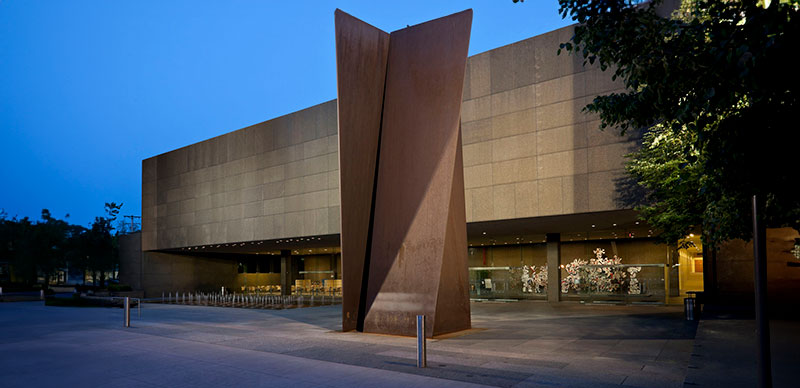Giving Forward
Who:
Lexi Bishop and Madeline Gent
What they support:
Carnegie Museum of Art’s Carnegie Collective
Why it matters:
“I saw the value and the importance of getting young professionals in the museum.” – Lexi Bishop
When she moved to Pittsburgh in 2020, Lexi Bishop faced a quandary familiar to a lot of young single people who’ve relocated to a new city.
“I didn’t have any friends here,” Bishop recalls.
An art dealer who’d worked at Christie’s in New York and more recently at the Nino Mier Gallery in Los Angeles, Bishop was hoping to connect with young professionals like herself in their 30s and 40s. But there didn’t seem to be any organized affinity group of young art patrons like herself, a suspicion confirmed when she reached out to one of the few people she knew—Sam Badger, the director of advancement at Carnegie Museum of Art.
“I asked Sam … what groups can I join for people my age?” she recalls. “He said, ‘Well, there really isn’t a group for people under 50.’”
There is now. A new initiative by Carnegie Museum of Art called the Carnegie Collective, launched in 2022, aims to bring together young art lovers from around western Pennsylvania to engage with the special programming and dynamic exhibitions at the museum. Co-chaired by Bishop and Madeline Gent, the executive director of Associated Artists of Pittsburgh, the Collective aims to cultivate and connect a new generation of art patrons through special events at the museum, social programs, and behind-the-scenes experiences throughout the region. The price point—$500 for a yearlong membership—is intended to attract people for whom the barriers to the art world may have seemed too steep a precipice.
“You want to build that deep community and commitment to the institution so that they stay with it their whole lives,” Bishop says. “Because that’s the whole point of development, right, to develop them?”
Pittsburgh has a long history of philanthropy, but the typical price point to be an entry-level donor at many cultural institutions can be into four or five digits. Carnegie Collective hopes to find a middle ground for people who, perhaps, might spend $2,000 on a suit but would consider it outrageous to put down the same amount of money on a painting.
“It’s trying to change the mindset of how you look at art,” Bishop says.
The initiative, which has about 50 members currently, intersects with both of the co-chairs’ professional lives. Since assuming the helm of Associated Artists of Pittsburgh in 2017, Gent has supported the work of visual artists in Pittsburgh by organizing exhibitions and events that boost their visibility.
She originally intended to join the Carnegie Collective only as a member, but jumped on board as co-chair after meeting with Bishop and Badger.
“I saw the value and the importance of getting young professionals in the museum,” Gent says. “There are so many conversations on who museums are for, who should be inside them, who should be going to their events, who should be all of that. What are other avenues for that, what are other avenues for ownership?”
So much of art can feel unapproachable and intimidating to younger art patrons, Gent adds. Part of their strategy has been to organize events with curators and collectors in more intimate settings, taking advantage of the relatively tight-knit community of artists in Pittsburgh.
One recent event was a private tour of the contemporary collection with Richard Armstrong Curator of Contemporary Art Liz Park. Another was a social evening at a local collector’s house.
“I feel like your access to the minds behind these amazing institutions—the barrier for entry—is so much lower,” Bishop says. “Pittsburgh is just such a humble city. People want to meet you and they want to share their knowledge with you. I think being a part of the Collective is taking advantage of that access that is so hard to find in any other city.”







